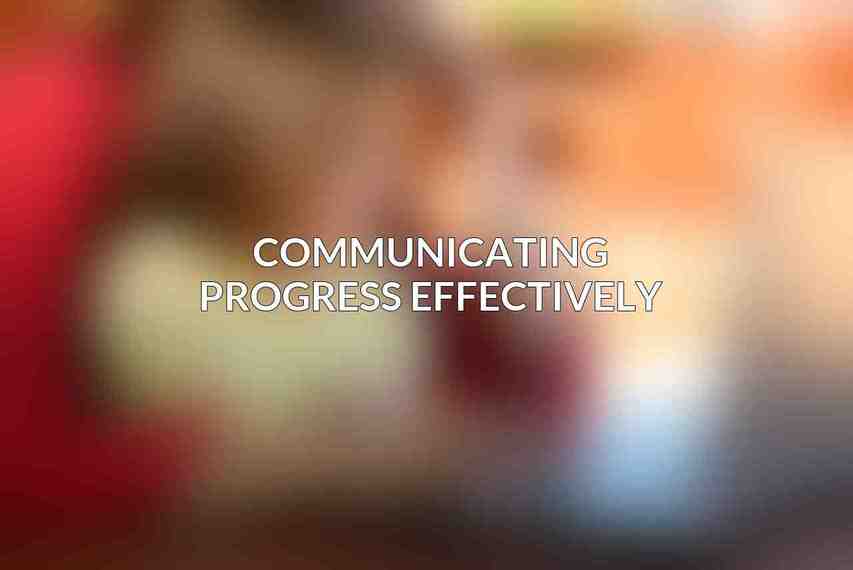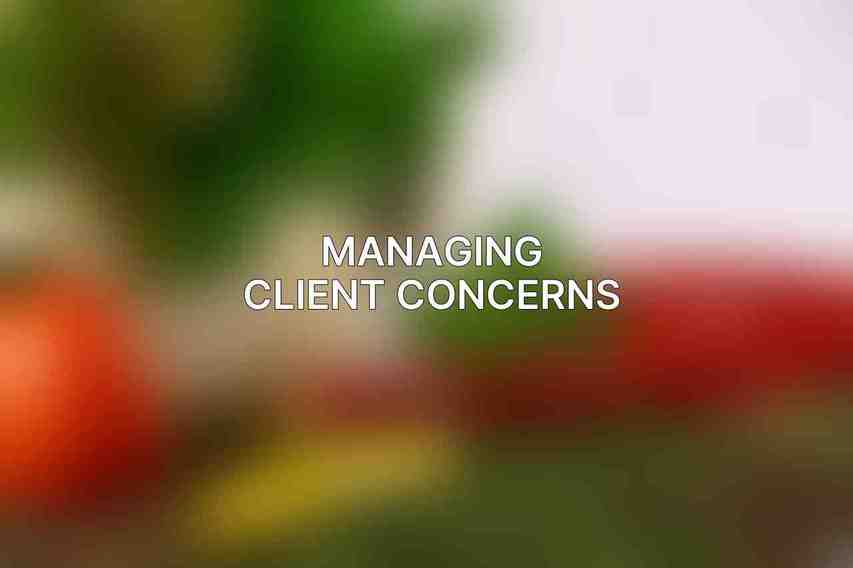time tracking plays a fundamental role in managing client expectations. Freelancers often juggle multiple projects simultaneously, making it crucial to allocate time efficiently. By monitoring and recording time spent on tasks, freelancers can gain insights into their productivity and ensure they meet project deadlines.
Understanding the Importance of Time Tracking in Freelancing
Time tracking allows freelancers to monitor how they utilize their time, helping them to identify areas where they can improve efficiency. It provides a clear picture of the tasks that consume the most time, enabling freelancers to prioritize effectively. Additionally, accurate time tracking helps in billing clients correctly, ensuring that freelancers are compensated fairly for their work.
Benefits of Managing Client Expectations with Time Tracking
Managing client expectations through time tracking enhances transparency and trust in the freelancer-client relationship. By setting realistic timelines and communicating progress through time tracking data, freelancers can align client expectations with project realities. This proactive approach minimizes misunderstandings and establishes a professional workflow.
Setting Realistic Expectations
To effectively manage client expectations, freelancers must set realistic timelines and communicate project scopes clearly.
Establishing Clear Project Scopes and Deadlines
Clearly defining the scope of a project, including deliverables, milestones, and deadlines, is crucial in managing client expectations. By outlining project requirements at the onset, freelancers can prevent project scope creep and ensure that both parties are on the same page regarding project objectives.
Communicating Timelines and Availability to Clients
Open communication regarding project timelines and availability is key to managing client expectations. Freelancers should proactively inform clients of their work schedule, availability for meetings, and any potential delays that may arise. Setting clear expectations from the beginning establishes a foundation for a successful client relationship.
Proactively Monitoring and Adjusting Project Timelines
Freelancers should continuously monitor project timelines and progress to identify any potential issues early on. By proactively tracking their time and progress, freelancers can adjust timelines and allocate resources as needed to ensure project deadlines are met. This proactive approach demonstrates accountability and professionalism to clients.
Using Time Tracking for Transparency
Utilizing the right time tracking tool is essential for freelancers to record project time accurately and share time records with clients regularly.
Choosing the Right Time Tracking Tool
Several time tracking tools cater to freelancers, each offering unique features to streamline time tracking processes. Popular tools like Toggl, RescueTime, and Hubstaff provide freelancers with the ability to track time across different projects, generate reports, and analyze productivity.
Recording Project Time Accurately
Accurate time tracking is critical for freelancers to bill clients correctly and understand how they allocate their time. By diligently tracking time spent on each task, freelancers can identify inefficiencies, improve time management skills, and enhance their productivity.
Sharing Time Records with Clients Regularly
Transparent communication is key to managing client expectations effectively. By sharing time records with clients regularly, freelancers provide insight into the work progress and demonstrate accountability. Regular time record updates keep clients informed, fostering trust and transparency in the working relationship.
Communicating Progress Effectively

Establishing regular progress updates and using time tracking reports to showcase progress are essential in managing client expectations.
Establishing Regular Progress Updates
Frequent progress updates keep clients informed about project developments and ensure that both parties are aligned on project milestones. By communicating progress regularly, freelancers can address any concerns or modifications early on, minimizing the risk of misunderstandings or delays.
Using Time Tracking Reports to Showcase Progress
Time tracking reports provide freelancers with visual representations of their work progress and time allocation. By utilizing these reports to showcase progress, freelancers can offer clients insight into the time spent on different tasks and the overall project status. This data-driven approach enhances transparency and builds client confidence in the freelancer’s work.
Proactively Discussing Time Allocation and Adjustments
Open communication regarding time allocation and adjustments is crucial for managing client expectations. If project timelines shift or new tasks arise, freelancers should proactively discuss these changes with clients, explaining the rationale behind any adjustments. This proactive approach fosters a collaborative and responsive client relationship.
Managing Client Concerns

Addressing overages and unexpected time usage, proposing solutions, and maintaining open communication are key aspects of managing client concerns effectively.
Addressing Overages and Unexpected Time Usage
In cases where projects exceed the estimated timeframe, freelancers must address overages with clients promptly. By acknowledging unexpected time usage and discussing the reasons behind the delays, freelancers can demonstrate accountability and work towards finding solutions to mitigate future overages.
Proposing Solutions and Adjustments When Necessary
When faced with challenges in project timelines or unexpected complexities, freelancers should propose solutions and adjustments to clients. By presenting alternative approaches or timelines, freelancers can work collaboratively with clients to address issues and ensure that project deliverables are met successfully.
Maintaining Open Communication and Building Trust
Maintaining open communication throughout the project lifecycle is essential for building trust with clients. Transparent communication about any challenges, delays, or changes in project scope fosters mutual understanding and demonstrates the freelancer’s commitment to delivering high-quality work. Building trust through communication is foundational to long-term client relationships.
Additional Tips for Managing Client Time Tracking
In addition to the core strategies mentioned above, freelancers can benefit from additional tips to enhance their client time tracking practices.
Setting Boundaries and Protecting Personal Time
Setting boundaries around work hours and personal time is crucial for freelancers to maintain a healthy work-life balance. By establishing clear boundaries and communicating availability times to clients, freelancers can ensure that they have dedicated time for work and personal commitments.
Using Time Tracking to Invoice Clients Accurately
Time tracking data serves as the foundation for accurate client invoicing. By leveraging time tracking records to create detailed invoices, freelancers can bill clients accurately for the time spent on each task or project. Transparent invoicing practices based on time tracking data build trust and professionalism.
Using Time Tracking for Professional Development
Beyond managing client expectations, time tracking can also serve as a tool for professional development. Analyzing time tracking data allows freelancers to identify areas for improvement, optimize their workflow, and enhance productivity. By leveraging time tracking insights, freelancers can continually refine their time management skills and grow their freelancing business.
effective time tracking is a cornerstone of managing client expectations in freelancing. By setting realistic timelines, utilizing time tracking tools for transparency, communicating progress effectively, and addressing client concerns proactively, freelancers can build strong and trustworthy relationships with their clients.
The Power of Time Tracking in Client Management
Time tracking empowers freelancers to manage client expectations, demonstrate accountability, and enhance transparency in their work processes. By leveraging time tracking data, freelancers can optimize their time management skills and deliver exceptional results to clients.
Best Practices for Effective Time Tracking in Freelancing
Best practices for time tracking include choosing the right time tracking tool, recording time accurately, sharing time records with clients regularly, and communicating progress effectively. By adhering to these best practices, freelancers can streamline their workflow and ensure client satisfaction.
Final Thoughts on Managing Client Expectations
Managing client expectations through time tracking is a dynamic process that requires continuous communication, adaptation, and professionalism. By implementing the strategies and tips outlined in this guide, freelancers can navigate client relationships with confidence and establish themselves as reliable and trustworthy partners in the freelancing industry.
Frequently Asked Questions
What are client expectations in time tracking?
Client expectations in time tracking refer to the specific requirements and deliverables that clients anticipate from a project in terms of time allocation and management.
How can I effectively communicate time tracking methods to clients?
To effectively communicate time tracking methods to clients, it is important to be transparent, provide clear explanations, and set realistic expectations regarding project timelines and deliverables.
What are some common challenges in managing client expectations with time tracking?
Some common challenges in managing client expectations with time tracking include scope creep, inaccurate time estimates, and lack of clear communication between clients and project teams.
How can I use time tracking to improve client satisfaction?
Using time tracking can help improve client satisfaction by providing clients with visibility into project progress, ensuring timely delivery of milestones, and facilitating open communication regarding any potential delays or issues.
What tools can I use to streamline time tracking and manage client expectations more effectively?
There are various time tracking tools available, such as Toggl, Harvest, and Clockify, that can help streamline the time tracking process and enhance communication with clients. These tools allow for accurate tracking of billable hours, automated reporting, and easy sharing of project progress with clients.